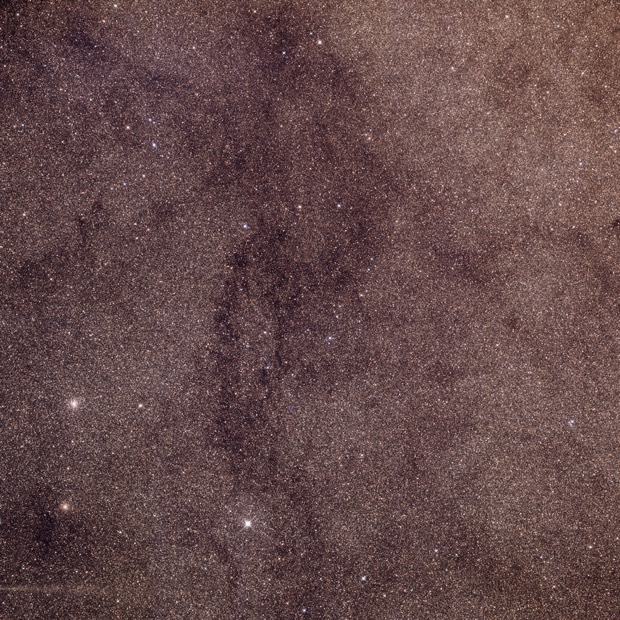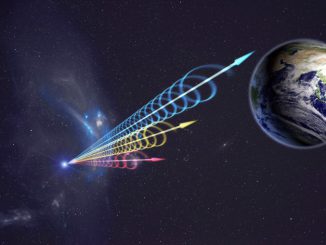
The 65-centimetre (25-inch) MeerLICHT – “More Light” – telescope, designed to hunt for optical counterparts of transient stellar explosions observed by the MeerKAT radio telescope array is now in operation. The innovative telescope, equipped with a 100-megapixel camera, is capable of imaging an area 13 times larger than the full moon. The telescope was inaugurated 25 May at the Sutherland Observatory in South Africa.
MeerLICHT will scan the southern skies along with the MeerKAT array, a precursor to the Square Kilometre Array and currently the largest radio telescope in the southern hemisphere, to look for supernova explosions and other transient events that suddenly brighten and then quickly fade away.
First light images of stars toward the centre of the Milky Way in an area known as Baade’s Window are “mind blowing,” says Paul Groot, co-principal investigator of the MeerLICHT project at Radboud University.
The image “illustrates the magnificent detail of this new telescope,” he said. “It is filled with stars from edge to edge and shows the high optical quality all the way to the edge of the field of view. Now we have to wait for any of these to blow itself apart!”
MeerLICHT is a joint venture with South African, Dutch and United Kingdom collaborators representing six institutions.

“For us it was the reason to join this consortium,” said Ben Stappers, a MeerLICHT collaborator at the University of Manchester. “Flashes of radio emission known as Fast Radio Bursts may now be ‘caught in the act’ by both MeerKAT and MeerLICHT. Hopefully we can finally determine the origin of these enigmatic flashes.”
Rudy Wijnands of the University of Amsterdam said the instruments, working together, will prove “extreme astrophysics” as well as less exotic objects, such as normal stars that produce large flares.
“The simultaneous optical-radio monitoring of these stars will allow us to investigate the impact of such flares on the habitability of the planets around them,” he said.



